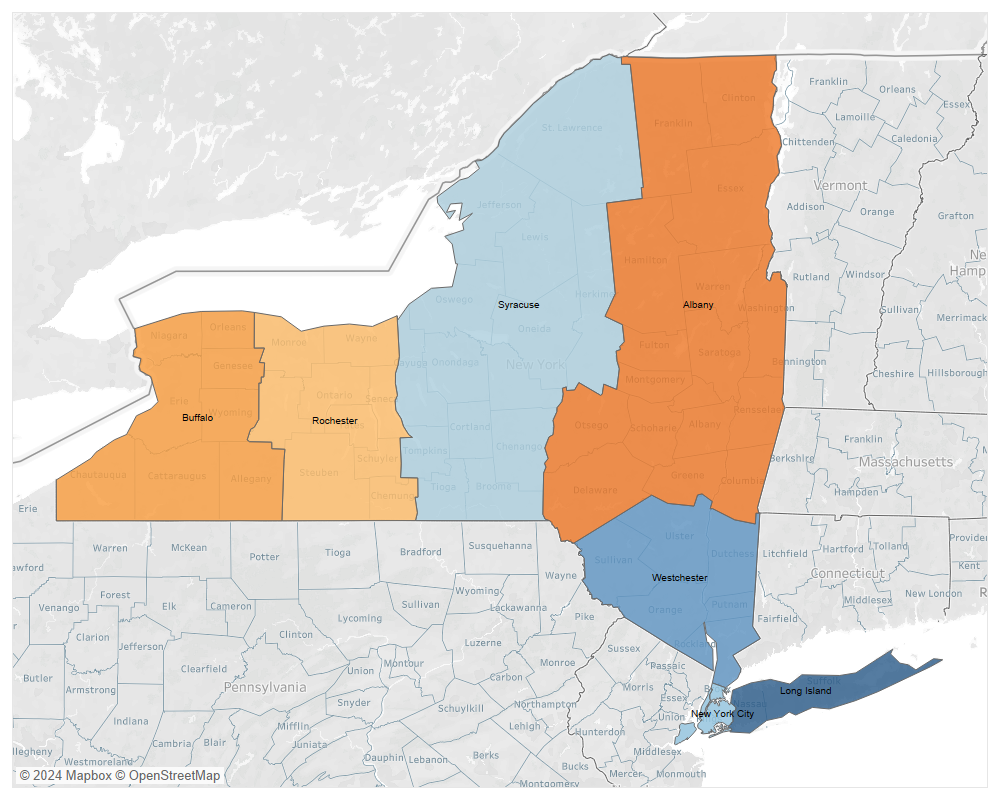Objective
To determine whether the Office of Children and Family Services has established and maintained adequate internal controls to enable it to oversee and monitor child care stabilization grantees to ensure proper use of child care stabilization grant funds; and to determine whether the grants met their intended purpose to stabilize child care operations to maintain care. The audit covered the period from January 2020 through November 2023.
About the Program
The COVID-19 public health emergency put a spotlight on the critical role child care plays in supporting children, families, businesses, and the economy as a whole. It also highlighted the fragility of the child care system. Child care is essential for our communities to thrive but, according to the New York State Child Care Availability Task Force, the system’s current structure means many families cannot access or afford high-quality care, and the workforce is largely underpaid for skilled and valuable work. In response to the urgent need in the child care sector, the American Rescue Plan Act (ARPA) included approximately $24 billion for child care stabilization grants.
The Office of Children and Family Services’ (OCFS) mission is to serve New York’s public by promoting the safety, permanency, and well-being of our children, families, and communities. As part of its mission, OCFS administers several child care grant programs including child care workforce retention and child care stabilization. Between May and June 2021, OCFS received $1.8 billion from ARPA and an additional $469 million from the Coronavirus Response and Relief Supplemental Appropriations Act. OCFS used the money to fund several COVID-19 response programs, including over $1.4 billion to fund child care stabilization grant programs. OCFS awarded these grant programs in two separate rounds. The first round Stabilization 1.0) focused primarily on stabilizing the child care sector. The second round (Stabilization 2.0) focused on stabilizing the child care workforce.
Key Findings
OCFS didn’t sufficiently monitor grantee expenses claimed under the programs to provide assurance that funds were used for allowable expenses. OCFS did not, as a practice, request or review receipts (even on a sample basis) to support expenses claimed. Instead, OCFS relied primarily on attestations from providers and expense report claims to support payments. Of the $2.6 million in expenses we reviewed from 39 non-special education providers, $373,182 (14%) reported to OCFS by 20 providers was either inadequately supported or not supported at all. This included, for example:
- $90,916 for which five providers did not maintain support, for various reasons. One provider stated on their expense report that $13,700 was used for bonuses, retirement contributions, tuition reimbursement, mental health supports, and health care contributions. However, during our site visit, the provider stated their employees declined all these benefits but could provide no further explanation on how the funds were spent.
- $51,517 in expenses claimed by two providers that did not meet Stabilization 1.0 criteria of serving children by October 31, 2021 or within 60 days of application, whichever is later. One provider had not had children in care since 2016 and received Stabilization 1.0 funds totaling $4,217.
- $33,350 in expenses from four providers that was claimed on the expense report but that, during our visit, providers stated hadn’t been spent and, consequently, no support was available.
While federal guidelines allowed OCFS latitude in developing a grant funding methodology, we found obtaining additional information (from providers or other State entities) that better represents providers’ operating conditions and enrollment might have been useful when calculating grant amounts. We found stark differences between the licensed capacity information OCFS used to determine grant awards and child care providers’ actual enrollment, which showed grant awards were not necessarily reflective of the providers’ operations currently or historically. This was especially glaring for special education providers. For the 16 special education providers we reviewed, award amounts would have been $1.09 million (18%) less had the State Education Department’s (SED) capacity information been used.
We question whether providers used all grant funds in alignment with the goals of the program. For example, although Stabilization 2.0 focused on supporting the child care workforce—which, according to the New York State Child Care Availability Task Force, has been historically underpaid—of the expenses reviewed, we found four providers used $73,036 in Stabilization 2.0 funds for health care contributions, retirement contributions, and bonuses (totaling over $14,000) for executive staff.
Key Recommendations
- Develop and implement enhanced controls and monitoring practices for child care grants administered by OCFS. This may include, but not be limited to, reviewing supporting documentation for grant expenditures using a risk-based approach.
- Continue efforts to identify and recover unspent or inappropriately spent grant funds from providers.
- Align providers’ grant awards to best meet the goals of the program, which may include, but not be limited to:
- Obtaining additional information and increasing communication with providers.
- Coordinating and sharing information with SED regarding special education providers.
- Evaluating whether additional factors should be considered when awarding grants.
Heather Pratt
State Government Accountability Contact Information:
Audit Manager: Heather Pratt
Phone: (518) 474-3271; Email: [email protected]
Address: Office of the State Comptroller; Division of State Government Accountability; 110 State Street, 11th Floor; Albany, NY 12236

